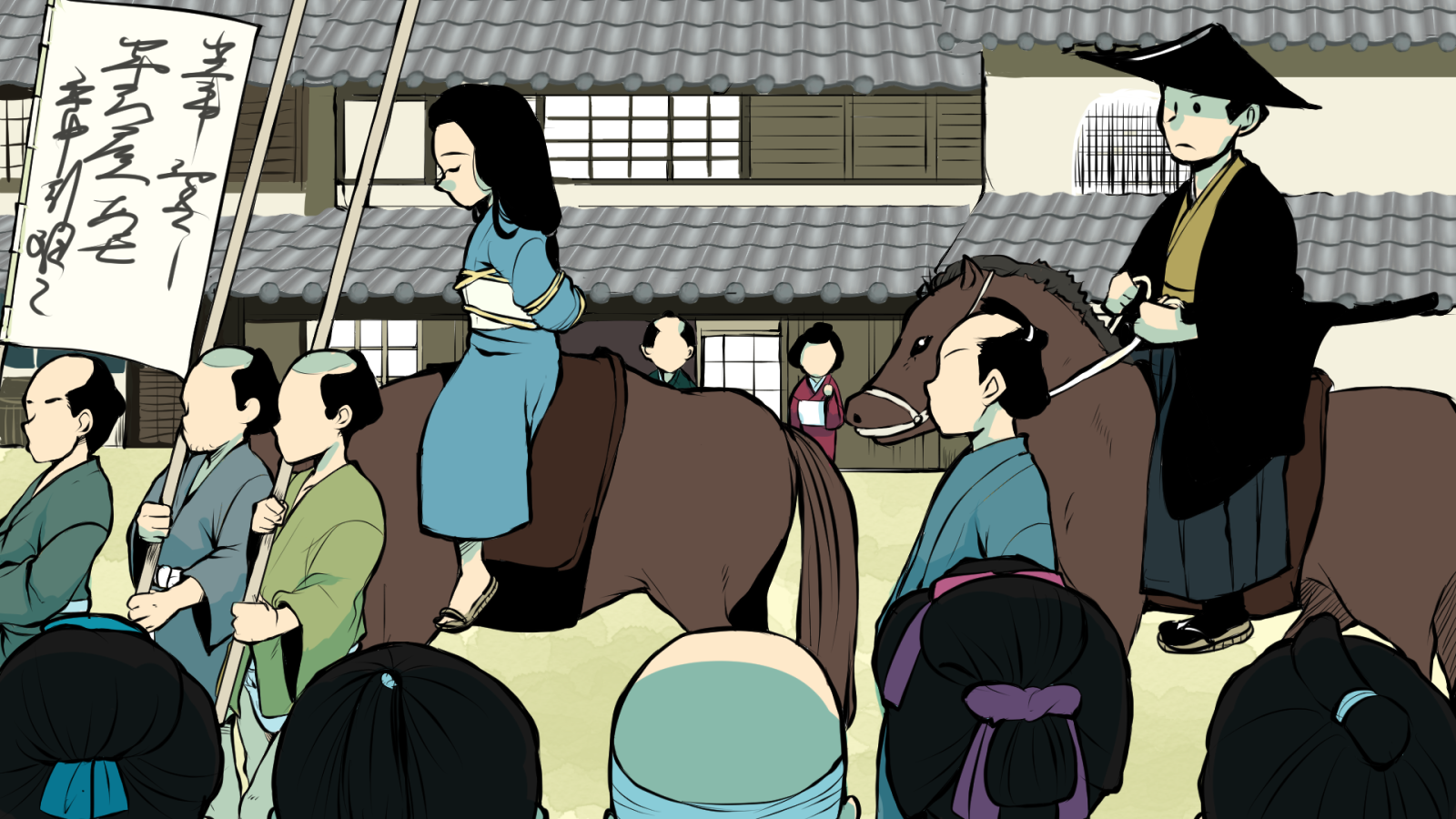Daienji, Bunkyo ward
Yaoya Oshichi and Horoku Jizo
The tragic love story of a girl who committed arson to see her love.

(Voice actor) Ms.Carolyn Miller

Horoku are unglazed clay pots. They are flat pots used for roasting tea leaves and steaming rice or beans. Deeply associated with Horoku pottery is the Daienji temple in the town of Mukogaoka in Bunkyo ward, Tokyo. It is about 5 minutes by foot from Tokyo Metro’s Shiroyama station or Hon-Komagome station. The Horoku Jizo (*Jizo is a statue of Kṣitigarbha depicted as a Buddhist monk) is there, surrounded by many offerings of Horoku pottery. It is known as the Jizo of healing for problems of the head such as headaches and eye, ear and nose conditions. The worshippers bring Horoku with their wishes written on them as offerings to the Jizo. The origin of the Horoku Jizo was as a memorial for young Yaoya Oshichi (*Oshichi of a vegetable seller). In Edo (current Tokyo Metropolitan area) during the Tokugawa shogunate, there was a saying “fire and fight are the glory of Edo.” Hikeshi (firefighters) were dispatched in times of fire. To communicate which team of hikeshi was on duty and where it was, they went up on a roof of nearby building and waved matoi (*flag with coat of arms) high into the air. Back then, instead of using water to extinguish fire, they stopped fire from spreading by demolishing the house where the fire broke out and its neighboring houses. This method of fire extinguishing was seemingly glorious. It was also risky for the matoi holders since the fire could easily reach the buildings they were waving the flags from. Firefighting was literally life risking. So hikeshi were very popular, winning the respect of Edokko (Edo natives). That is why fire (fighting) was called “Edo’s glory”. Some say the gloriousness of the “fight” part also came from hikeshi. Different teams of hikeshi often fought over a fire site since they all took pride in their team’s work as the best. There were a lot of fires in Edo, as such a saying demonstrates. In addition to the traditional Japanese houses not being fire resistant, Edo was one of the world’s most crowded towns with a population of one million people. The houses were densely built so fire spread easily. Therefore, arson was a felony punishable by death. The girl, Yaoya Oshichi was sentenced to death for arson. Arsonists were hated and despised by the Edo commoners, but for some reason, Oshichi gained their sympathy. Many had appealed for her forgiveness, and then after her death, Horoku Jizo was built and many visited to pray for her soul. Why do you think Yaoya Oshichi had the sympathy of the commoners?
"100 hidden stories of Tokyo" Application Download
Caution
This app contains in-app purchases.
Please note that packet data fees will be charged separately.



